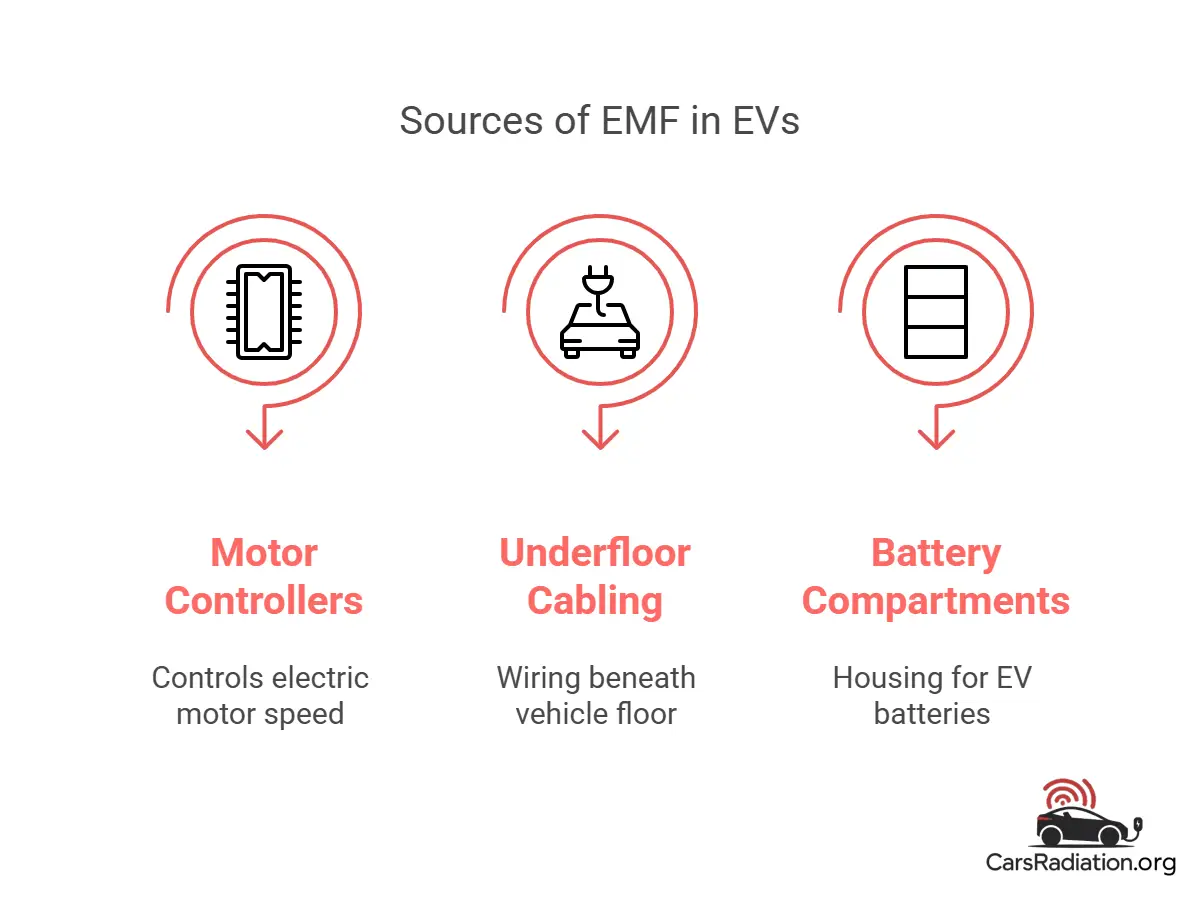Are Electric Car Batteries Neurotoxic?

While the electric vehicle (EV) batteries themselves are not inherently neurotoxic by chemical composition, the system-level emissions from high-voltage circuitry, inverters, power lines, and associated electronics present potential biological interactions that merit closer scrutiny. These emissions, primarily in the form of extremely low frequency (ELF) magnetic fields, have been studied for decades in the context of public health exposure to non-ionizing radiation.
Lack of Direct Neurotoxicity from Battery Materials Alone
To date, no peer-reviewed scientific study has demonstrated that the materials within EV battery cells, under standard operating conditions, cause direct neurotoxic effects.
However, the operation of electric vehicles requires complex energy conversion systems, including:
- High-voltage battery packs
- DC-AC inverters
- Onboard charging infrastructure
These systems are known sources of ELF magnetic fields, which have been identified as biologically active at specific exposure levels.
Thus, the relevant inquiry is not chemical toxicity per se, but the biophysical implications of the electromagnetic environment surrounding EV occupants.
EMF Exposure in the EV Cabin: Characterization and Levels
Measurements taken inside electric and hybrid vehicles consistently show increased ELF magnetic field levels compared to internal combustion engine (ICE) vehicles.
These fields originate predominantly from high-current pathways, such as:
- Motor controllers
- Underfloor cabling
- Battery compartments
And they intensify during high power demand conditions (e.g., acceleration, regenerative braking, or charging events).
Field strengths exceeding 10 µT have been recorded near footwells and rear seats, particularly in vehicles lacking sufficient shielding or optimized current return paths.
While most measured levels remain below ICNIRP occupational exposure limits, these guidelines are intended for short-term acute exposure and do not address potential chronic effects associated with prolonged occupancy. It should be noted that the ICNIRP guidelines also do not consider non-thermal biological mechanisms.

Neurological Effects Associated with ELF Magnetic Fields
Several large-scale evaluations, including WHO’s Environmental Health Criteria Monograph No. 238 and the BioInitiative Report, have reviewed literature examining neurological outcomes related to ELF exposure. Primary observed effects include:
- Cognitive and neurobehavioral changes under prolonged exposure;
- Disruption of neuroendocrine regulation, including melatonin suppression;
- Association with increased incidence of neurodegenerative conditions, including Alzheimer’s disease.
Although these findings are not attributable exclusively to electric vehicles, the ELF-dominant field spectrum emitted by EV power systems is analogous to the exposure conditions analyzed in these studies. As such, the cabin environment of EVs may represent a non-negligible exposure setting, particularly in fleet vehicles or high-usage scenarios.
Experimental Evidence from Animal Studies
Controlled animal studies investigating the physiological response to EV-representative ELF magnetic fields suggest measurable biological effects.
One study involving mice exposed to simulated EV cabin fields reported alterations in immune cell markers and body weight trends. While not designed to determine long-term neurotoxicity, such findings point toward cumulative exposure implications, especially in scenarios involving repeated or extended vehicle use.
Precautionary Recommendations and Regulatory Gaps
The International Agency for Research on Cancer (IARC) classifies ELF magnetic fields as possibly carcinogenic to humans (Group 2B).
While this classification was based primarily on epidemiological associations with childhood leukemia, the broader implication is the need for precaution in environments where ELF exposure is frequent and prolonged.
The European Commission’s Joint Research Centre has similarly called for risk-based exposure assessments in transport settings, noting that some EVs exceed conservative exposure thresholds under specific operating conditions.
Given the current gaps in long-term neurological data and the slow adoption of cabin-level exposure standards in the automotive sector, precautionary measures, such as shielding enhancements, rerouting of power cables, and minimized exposure duration, are advised.

